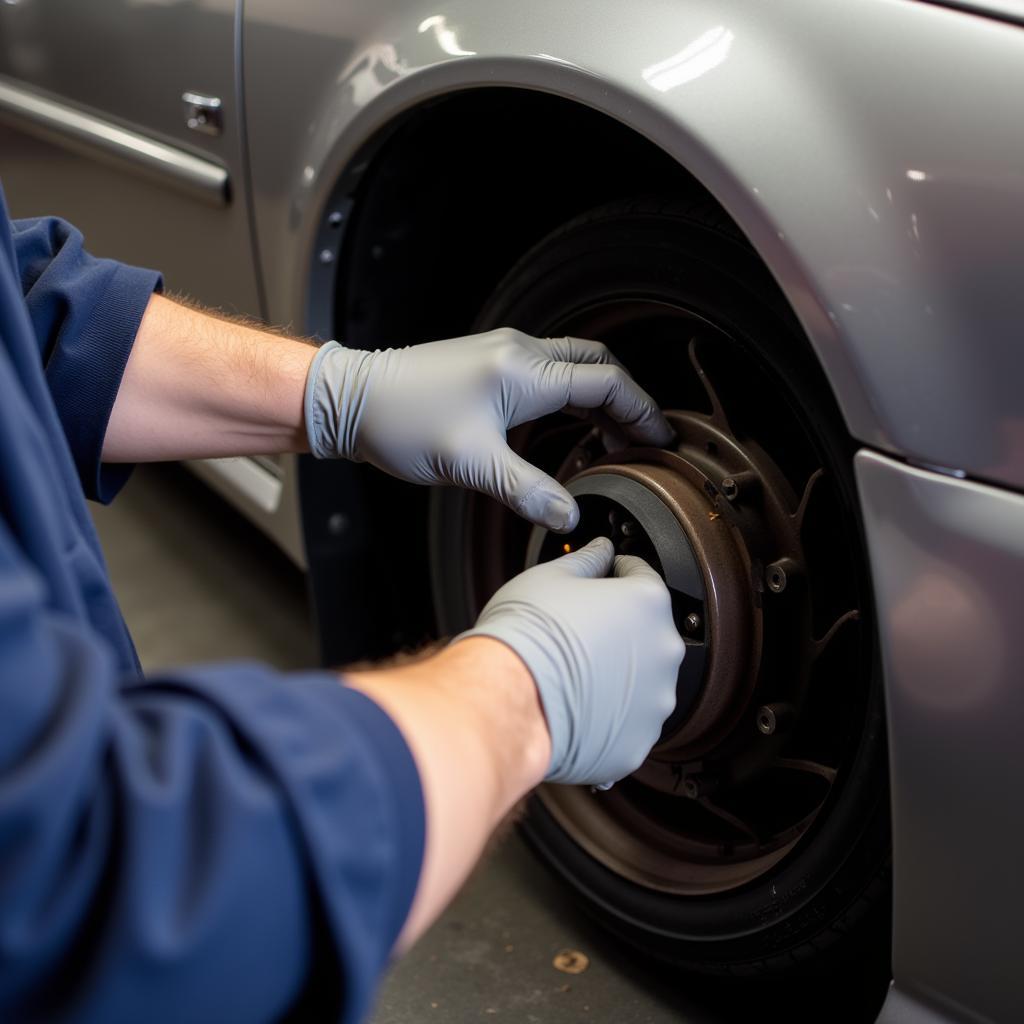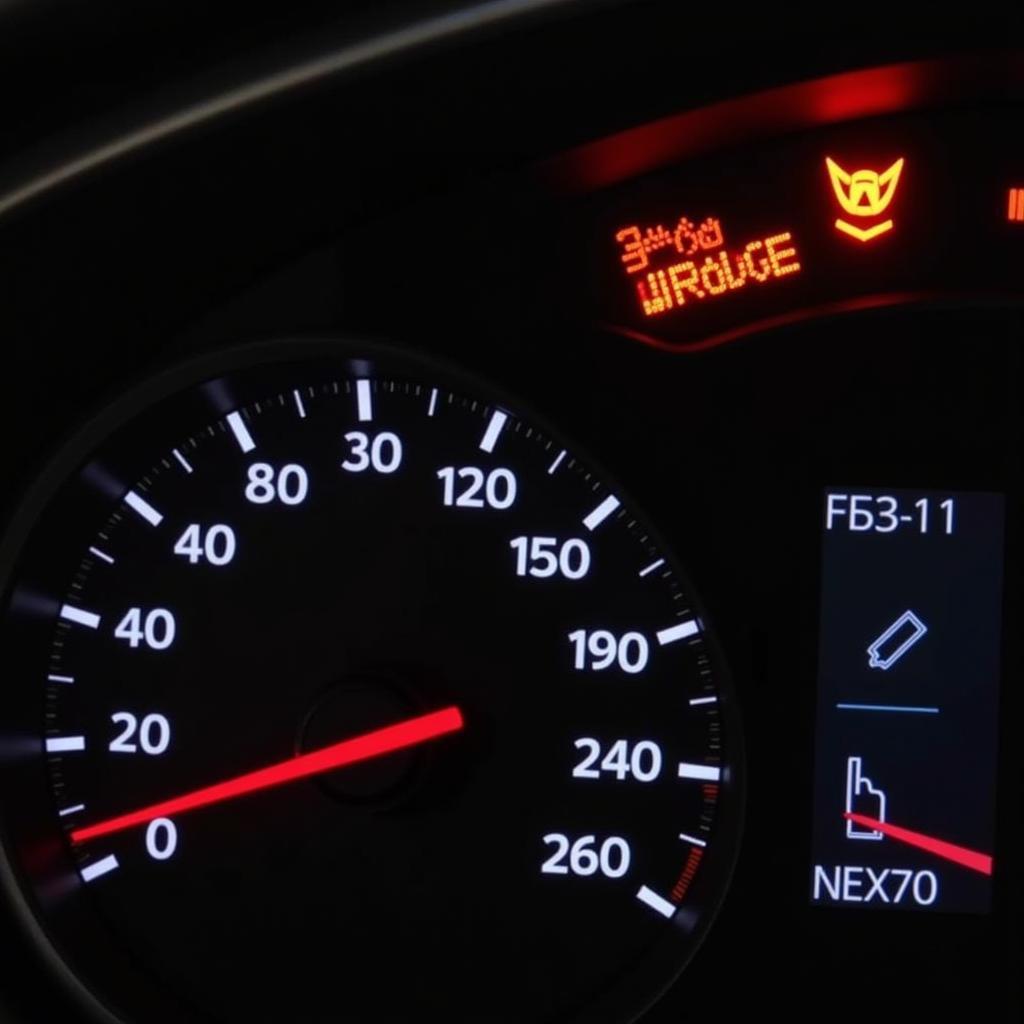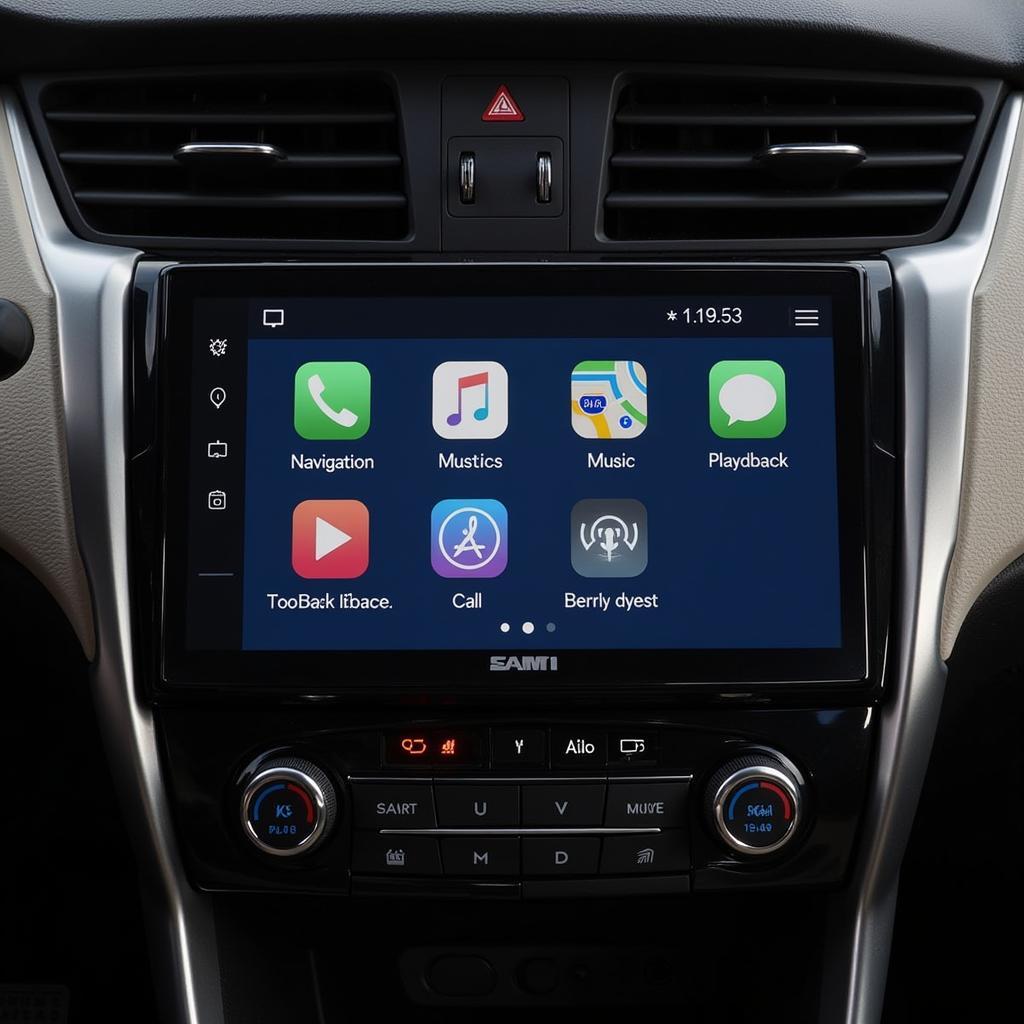The brake warning light on your 2000 Pontiac Grand Prix is a crucial safety feature designed to alert you of potential braking system issues. If this light illuminates on your dashboard, it’s essential to address the problem promptly to ensure your safety and that of your passengers.
This comprehensive guide will delve into the common causes of a brake warning light on a 2000 Pontiac Grand Prix and provide you with potential solutions to get you back on the road safely.
Understanding Your Brake Warning Light
The brake warning light on your dashboard can illuminate in different ways, each signaling a different potential issue:
- Solid Light: A solid brake warning light typically indicates low brake fluid levels, a problem with your parking brake, or an issue with the brake system’s hydraulic pressure.
- Flashing Light: A flashing brake warning light often signals a more serious problem, such as a malfunctioning ABS (Anti-lock Braking System) or a critical brake system failure.
 2000 Pontiac Grand Prix Dashboard with Brake Warning Light
2000 Pontiac Grand Prix Dashboard with Brake Warning Light
Common Causes of a 2000 Pontiac Grand Prix Brake Warning Light
Low Brake Fluid
One of the most frequent causes of a brake warning light is low brake fluid. Brake fluid is essential for transferring force from your brake pedal to the brake calipers, ultimately stopping your vehicle.
How to check your brake fluid:
- Locate the brake fluid reservoir: Open the hood of your Grand Prix and find the brake fluid reservoir. It’s usually located on the driver’s side of the engine bay and is a translucent plastic container with a black cap.
- Check the fluid level: The reservoir will have minimum and maximum markings on the side. Ensure the brake fluid level is between these markings.
What to do if your brake fluid is low:
If your brake fluid is low, it’s crucial to add the correct type of DOT (Department of Transportation) brake fluid specified in your owner’s manual. If the fluid level remains low after adding fluid, it could indicate a leak in the brake system, requiring immediate inspection by a qualified mechanic.
 Mechanic Checking Brake Fluid Level
Mechanic Checking Brake Fluid Level
Worn Brake Pads
Brake pads are designed to wear down over time. When they become too thin, the brake warning light may illuminate. This light is often triggered by a sensor embedded in the brake pad itself.
Signs of worn brake pads:
- Squealing or screeching noises when braking
- Grinding sounds when applying the brakes
- Vibrations felt through the brake pedal
If you experience any of these signs, it’s crucial to have your brake pads inspected and replaced as needed by a qualified mechanic.
Faulty ABS Sensor
The Anti-lock Braking System (ABS) is a safety feature that prevents your wheels from locking up during hard braking. If an ABS sensor malfunctions, it can trigger the brake warning light.
Diagnosing a faulty ABS sensor:
A faulty ABS sensor usually requires specialized diagnostic equipment. If you suspect an issue with your ABS system, it’s best to consult a qualified mechanic to diagnose and address the problem.
Other Potential Causes
While the above are the most common causes, other potential issues can trigger the brake warning light on your 2000 Pontiac Grand Prix:
- Faulty brake light switch: The brake light switch activates your brake lights when you press the pedal. If it malfunctions, it can also illuminate the brake warning light.
- Hydraulic system issues: Issues within the brake system’s hydraulic lines, such as leaks or blockages, can lead to pressure loss and trigger the warning light.
- Electrical problems: Wiring issues or a faulty brake warning light switch can also cause the light to illuminate.
“Addressing brake warning light issues promptly is crucial,” says John Smith, a seasoned automotive electrician with over 20 years of experience. “Ignoring the warning light can lead to costly repairs and compromise your safety on the road.”
Conclusion
A glowing brake warning light on your 2000 Pontiac Grand Prix should never be ignored. It’s a vital safety indicator that demands immediate attention. By understanding the potential causes and following the recommended steps, you can address the issue promptly and ensure the safe operation of your vehicle. However, remember that diagnosing and repairing brake systems often requires specialized knowledge and tools. If you’re unsure about any aspect of your car’s braking system, it’s always best to consult a qualified mechanic for a thorough inspection and professional repair.


